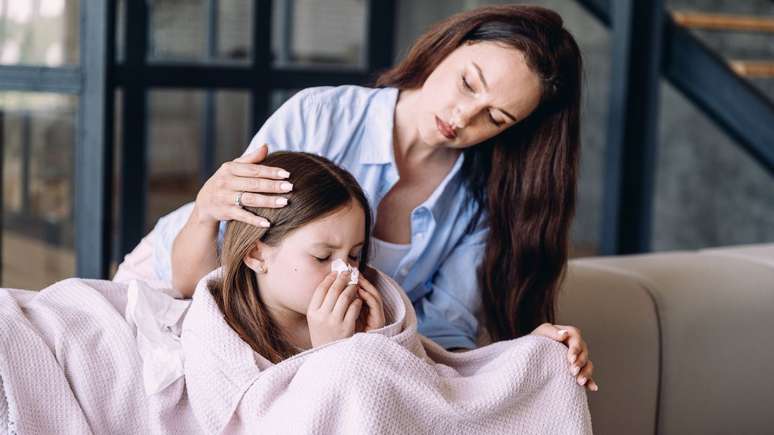The expert explains how to avoid the most common respiratory diseases in children in autumn, such as bronchitis
To the fallsymptoms such as coughing, sneezing, fever, malaise and a very runny nose become very serious common in children. This is due to the drop in temperature and the abrupt climate changes that characterize this season some bacteria and various viruses appear more frequently.
Some of the most common viruses during this period are rhinovirus, influenza virus (which causes several types of flu), adenovirus (which causes colds, conjunctivitis, bronchitis and pneumonia), metapneumovirus and respiratory syncytial virus (RSV ). The latter is responsible for most cases of bronchiolitis, one of the most common respiratory diseases in children.
One of the viruses that worries parents of children the most is RSV, as it can evolve very quickly. Some of its signs are rapid breathing, lowering of the fork (area near the sternum) and movement of the nasal flaps, which indicate respiratory failure. A persistent fever that doesn’t go away with medications indicates that the problem is progressing.
“In addition to the drier climate, we have problems such as the natural seasonality of these agents, increasing between the months of March and August, and the human actions that favor their spread, such as crowding in closed places and/or with little ventilation and lack of care for the environment, coughing or sneezing”, underlines Dr. Cid Pinheiro, coordinator of pediatrics at the São Luiz Morumbi Hospital.
All these diseases are transmitted through the respiratory tract, passing from one person to another through droplets released by a sneeze, for example. Therefore you need to pay attention to this.
Dengue
In addition to these respiratory diseases, which often appear in children in autumn, there is also dengue fever must remain in evidence. “As with other viral diseases, treatment is symptomatic and hydration is essential. Parents need to be aware of changes in the pattern of symptoms. In fact, if this happens, they should go to the emergency room again,” advises the specialist.
In the specific case of dengue, it is however essential to know which drugs are recommended or not. Anti-inflammatories are among the prohibited categories, as they increase the risk of bleeding, one of the possible complications of the disease.
Preventive measures
The best way to prevent respiratory diseases in children is to encourage and help them do so comply with some preventive measures. Some of them are:
- Avoid closed and poorly ventilated places
- Sanitize your hands
- Follow coughing and sneezing protocols, covering your nose and mouth
- Social isolation in case of symptoms
- Using a face mask
- Always keep your vaccination card up to date
In the specific case of dengue it is also necessary to eliminate sources of stagnant water, use effective repellents against Aedes a Egypti and place mosquito nets on the windows.
Source: Terra
Ben Stock is a lifestyle journalist and author at Gossipify. He writes about topics such as health, wellness, travel, food and home decor. He provides practical advice and inspiration to improve well-being, keeps readers up to date with latest lifestyle news and trends, known for his engaging writing style, in-depth analysis and unique perspectives.









